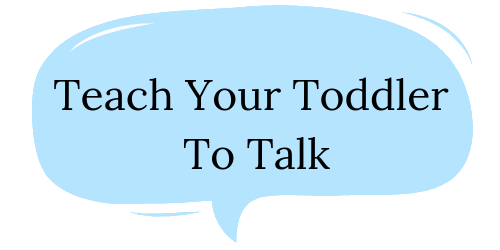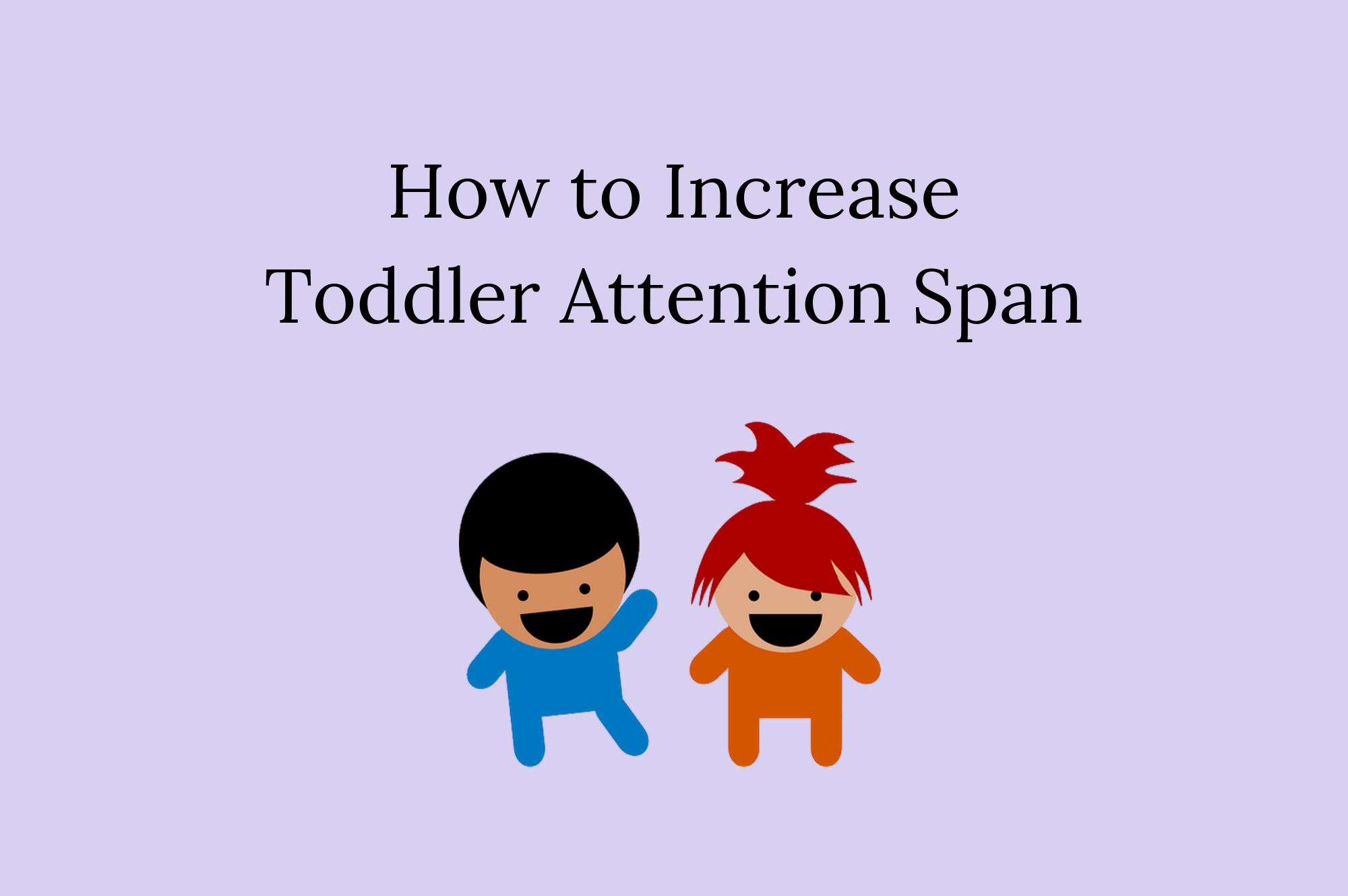Does your toddler seem to be bouncing off the walls? Are you looking for ways to increase toddler attention span? Toddlers are well known for being busy little bees and having a short attention span. It’s normal for your toddler to be on the move, exploring their environment. After researching a variety of sources, it appears that the average attention span for a toddler is about 2-5 minutes for every year of their age. This translates into:
1 year old: 2-5 minutes
2 years old: 4-10 minutes
3 years old: 6-15 minutes
It’s important to remember that your child’s ability to focus on an activity will depend on a variety of factors such as their interest in the activity, the difficulty level, whether they are playing alone or with others, and time of day. These figures do not represent attention span for watching TV, but engaging with real activities or tasks in their environment (more information about TV and attention is included below).
Focused attention is the ability to have sustained engagement with an activity. This is where learning happens! If your child finds it especially difficult staying with an activity for more than 1 or 2 minutes, this could impact their ability to learn new words and concepts. Keep reading to learn how to increase toddler attention span.
HOW TO INCREASE TODDLER ATTENTION SPAN
1) Use Developmentally Appropriate Activities
When playing with your toddler, you want to use activities that are developmentally appropriate. That means that your child has the cognitive ability to engage with them and complete the task. It’s unrealistic to expect your 2-year-old to complete a 12 piece puzzle. If the task is too difficult, they are going to have less attention for it. But maybe they can complete a 3 or 4 pieces puzzle, or stack blocks to make a tower.
2) LET YOUR CHILD LEAD
Your toddler will generally have more attention for things they are interested in. When you are working on building your toddler’s attention, wait to see what toys or objects they are drawn to. Get down on their level and play with them, being fun and animated. Talk about what they are doing and join into their play, trying not to take over the activity. Research has shown that 1-year-olds paid attention to toys longer when their parents were also engaged in the toy. Your toddler will be more interested in playing for longer periods of time if they are having fun with you!
3) “ONE MORE TURN”
This is a great tip from Laura Mize (SLP) at Teach Me To Talk. Say you are playing a game with your toddler such as throwing a ball into a basket. They might take a couple turns and then start to walk away. Before they leave, you stop them playfully and say “one more turn!” This is a nice way of increasing their attention span for an activity just a little bit so they can be successful. It’s not realistic to go from having an attention span of 30 seconds to sitting down and reading a book for 20 minutes, but most kids can take one more turn if we help them!
4) USE A “FIRST, THEN SCHEDULE”
A “first, then” schedule uses pictures to show what comes first, and what comes next. This can help redirect your child to their current activity and let them know what comes next. I usually have pictures attached with velcro.
For example, if you and your child are playing with a ball, and they want to move on to playing with the cars, I would put a picture of a ball in the “first” square, and a picture of a car in the “then” square. If they start walking away from the ball, you say “first ball” (point to the ball), “then car” point to the car. Then help redirect them back to the ball.
At first, you might just do one extra turn with the ball and then say “ball’s all done!” and help them take the picture off the schedule. This is teaching them the first, then system. The idea is to have a quick turn of something less preferred in order to get something they really like! Eventually you will be able to increase the amount of time they spend at the first activity.
Now it’s not always practical to have a bunch of pictures on hand for each activity. So what I do instead in my speech therapy sessions is draw out a quick picture on a note pad or white board. I will just write #1 and #2, and after they complete each one, I cross it out and say “all done!” If your child is interested, they might also want to help you cross it off, so you can do it together.
5) TURN OFF THE TV
If you’ve read my other blog posts, you know that I am a big advocate for less screen time for toddlers. Not only can it impact a child’s language development, but according to WebMD, a three year old who is exposed to 2 hours of TV a day has a 20% increased risk in having attention problems at age 7. The more TV a child watches, the more that risk increases. (Just think about how screen time has impacted your own attention span!) Reducing TV and screen time in general, is beneficial for your toddler in many ways. Check out my article on screen time here.
SUMMARY
It’s typical for toddlers to be very active and have a short attention span, but by using these tips you can help increase their attention span and their ability to learn new things!
WANT MORE WAYS TO HELP YOUR TODDLER TALK?
References
Gaertner, B. M., Spinrad, T., & Eisenberg, N. (2015, June 19). Focused attention in toddlers: Measurement, stability, and relations to negative emotion and parenting. Retrieved from https://asu.pure.elsevier.com/en/publications/focused-attention-in-toddlers-measurement-stability-and-relations
Loh, A. (n.d.). Improving Your Child’s Attention Span. Retrieved from http://www.brainy-child.com/articles/children-attention-span.shtml
Nierenberg, C. (2016, April 28). Simple Trick May Improve an Infant’s Attention Span. Retrieved from https://www.livescience.com/54594-tips-to-improve-infants-attention-span.html
Schmitt, B. D. (2014). Attention Deficit/Hyperactivity Disorder (ADHD): How to help your child. Retrieved from https://www.summitmedicalgroup.com/library/pediatric_health/pa-hhgbeh_attention/




